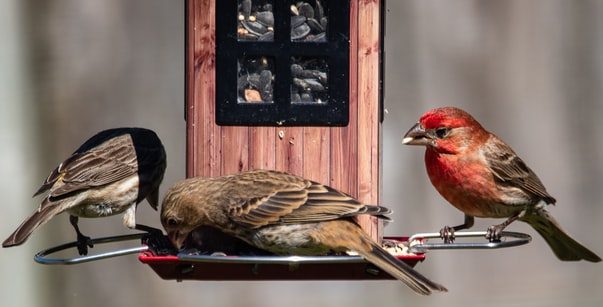
Many of us want to get back to nature. We often think of far away big National Parks and neglect the park that is literally in our own back yard.
Trees and Plants
Identifying the trees in your yard is a good place to start and just that knowledge puts you ahead of most of your neighbors! There are lots of good tree identification books out there. My favorite is the Audubon field guide. Speaking of field guides that may be a good place to start your education and resource toolkit.
What Plants Do You Have or Can You Add Some?
OK, so you have some ornamental shrubs as a part of your landscaping. What can you learn about them? Where did they come from? Can you add some others that are helpful to animals and friendly insects?
Birds
Many varieties of birds seem to inhabit even the smallest of spaces. Just go outside and listen early some morning. Grab a field guide and maybe an inexpensive pair of binoculars and see how many kinds you can identify.
Bugs
If you think the variety of birds can be great in a small space wait to you start looking for insect varieties! Take birds and multiply by a factor of 100 or more.
Leaves
Leaves can be a subset of your tree explorations. An old hobby used to be drying varieties of leaves in the pages of an old book. And then you have the color varieties of the fall. What structure can you see with a magnifying glass?
Little Animals
With some trees or a little bit of brushy cover little animals like chipmunks, rabbits, and squirrels will soon find homes. With some quiet observation you will soon learn about how they live out their lives.
Photography
Take your digital camera and really start to look around. Look at the sky, trees, flowers and shapes of things. Take a bunch of photos and bring them into a digital editing program and start messing around. See what you can create.
Macro Photography
Macro photography is close-up photography. Some cameras have a certain amount of capability built in, or sometimes you need a special lens. You open a whole new world when you go close and even a small backyard or a local city park can provide thousands of opportunities. Another thing to try is to pick up an inexpensive USB microscope that opens even more possibilities.
Bird Feeding
There are endless opportunities with bird feeding. Find out what types of feed attracts what species. Experiment with different kinds of purchased or self-made feeders. Then mix in some photography and bird identification. Just remember once you start feeding your feathered friends don’t stop and leave them hungry, especially in winter!
Bat Houses
Want to get rid of mosquitos and gnats? Bats are voracious insect eaters and generally harmless to humans despite their vampire reputation! Check online for bat house designs.
Mini Wildlife Sanctuary
Can you take a section of your yard and make it a mini wildlife sanctuary? Pick a corner and let some grass and plants grow. Maybe create a little brush pile. Many little creatures will thank you and provide opportunities for observation.
Rocks
Depending on where you live you may find a selection of rocks nearby. Grab a guidebook. What kind are they? How old are they?
Tools of the Hobby
Start simple with just a notebook to record your observations. Maybe add some guidebooks and a magnifying glass. Eventually you will want a camera if you don’t have one already.
Where To Go Next
Once you are hooked on nature the possibilities for growth are endless. Consider state and national park visits. Join a conservation effort. Join a park or trail cleanup effort or start one.
Let’s hear your ideas!
Speak Your Mind